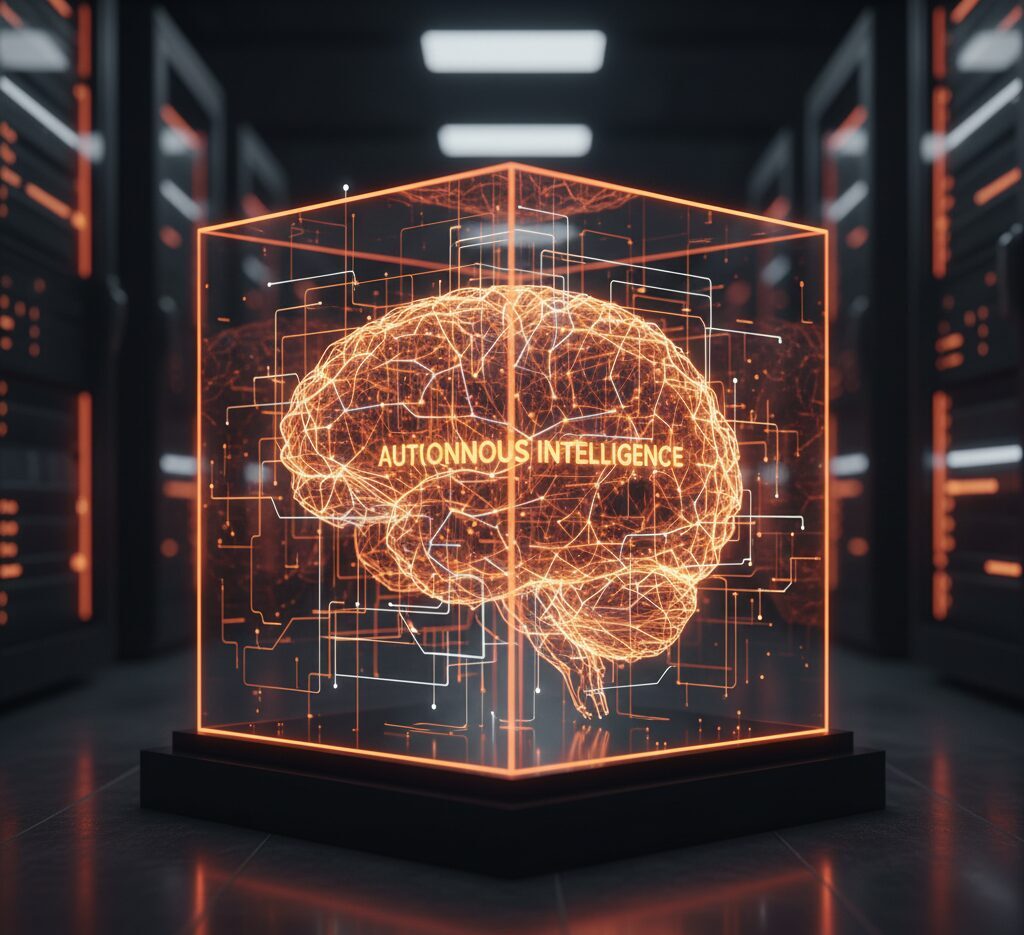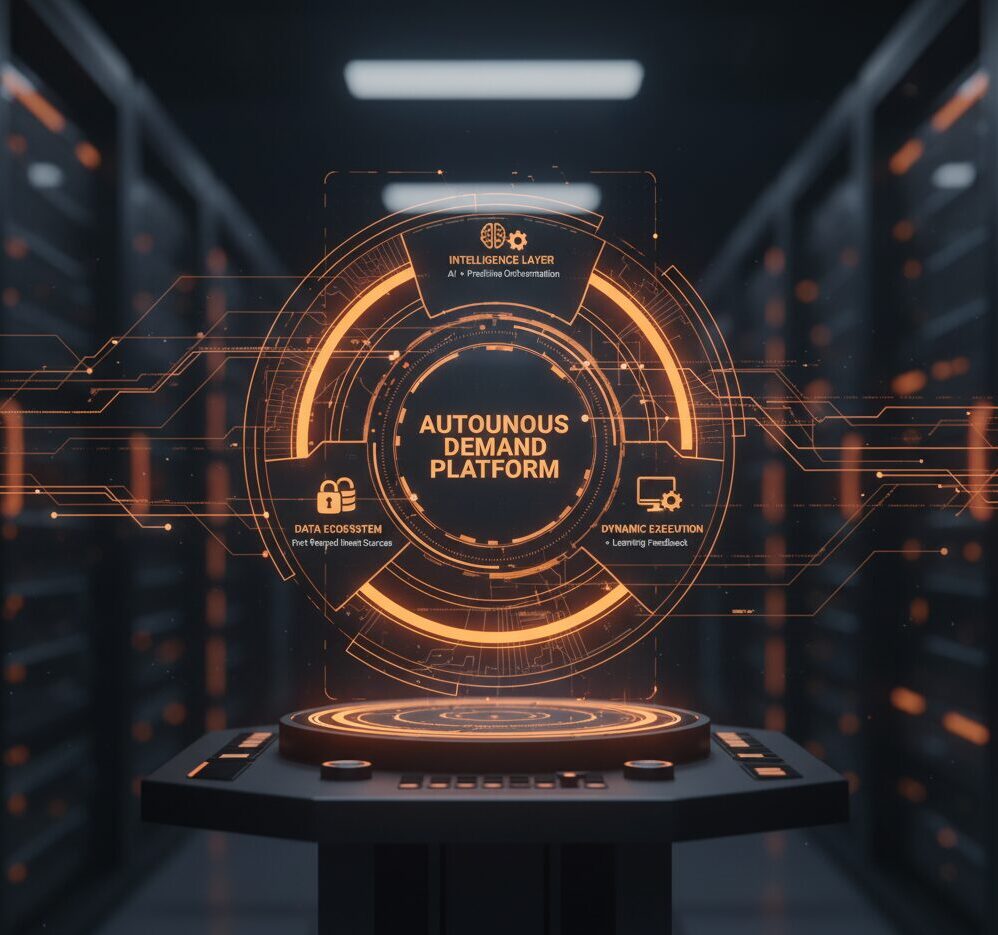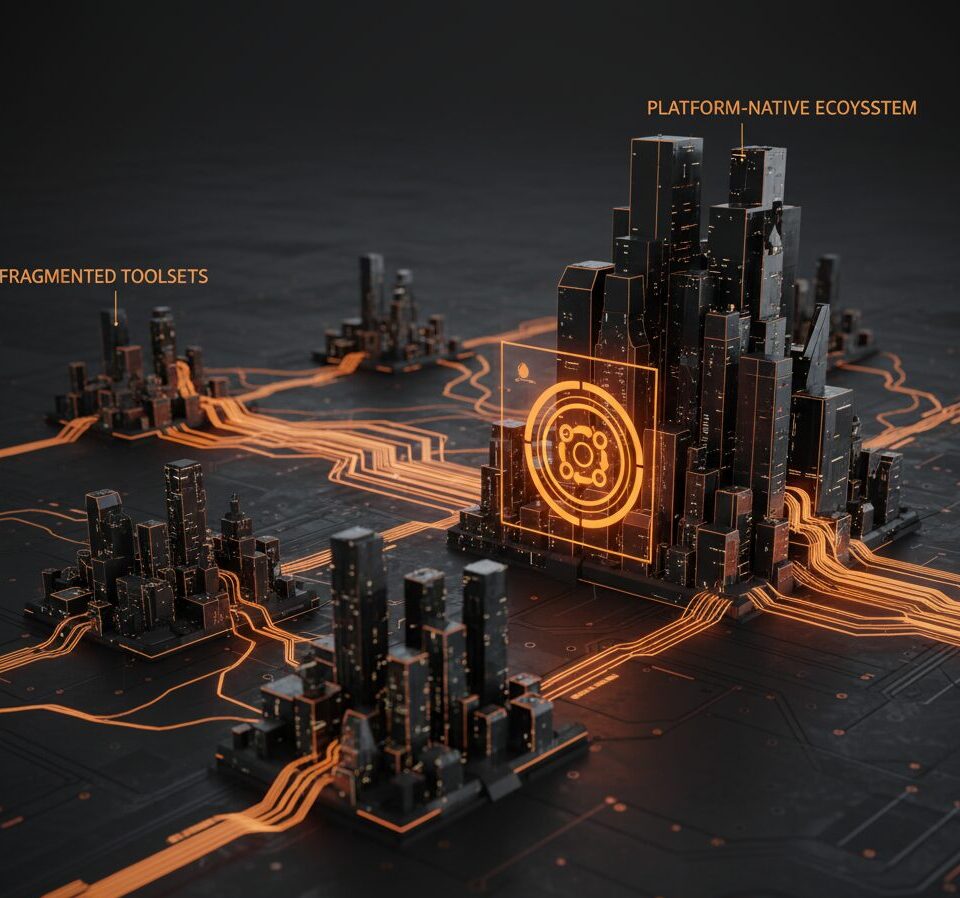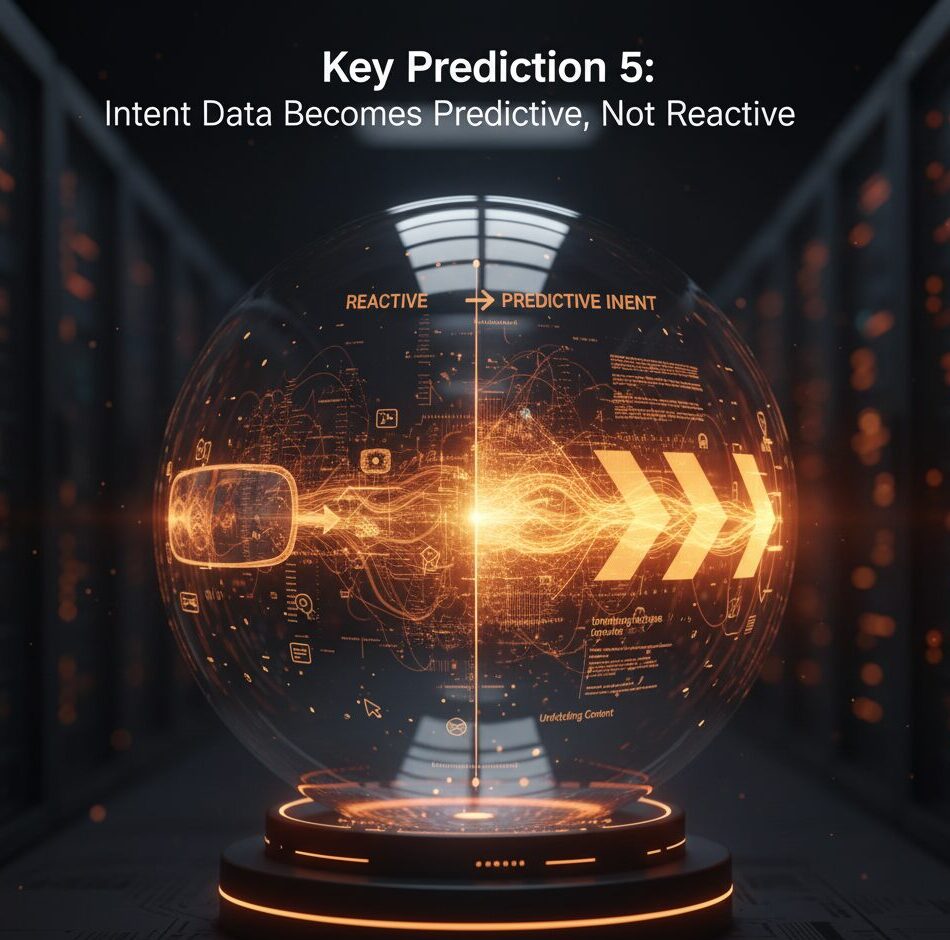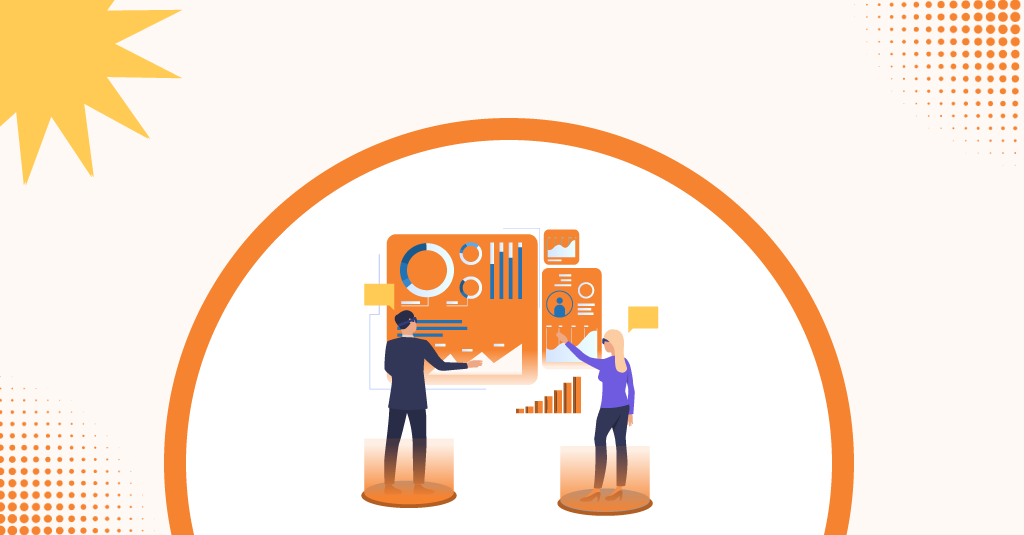
2026 Martech Stack Predictions: The Rise of Autonomous Demand Platforms
- Last updated on: November 6, 2025
Over the past decade, marketing technology has expanded from a tactical toolkit into the operating system of modern growth. From CRMs and automation tools to ABM and AI-driven analytics, the martech stack has become both the brain and backbone of B2B marketing.
At Intent Amplify, we believe that the next phase of marketing evolution will be defined not by tool count but by coordination, intelligence, and self-optimization. The martech stack is evolving from a collection of systems into a living ecosystem. One capable of predicting, personalizing, and performing without constant human orchestration. This is the era of Autonomous Demand Platforms (ADPs). Integrated systems that combine data, intent, and AI to autonomously execute and optimize demand-generation activities.
Market Context: Martech’s Saturation and the Shift Toward Intelligence
In 2025, martech reached an inflection point. The average enterprise marketing stack now includes over 120 distinct applications. According to Chiefmartec’s latest landscape update, yet utilization rates remain below 30%. This means marketing teams are sitting atop an ocean of underused technology, siloed data, and disconnected workflows.

The global martech market, valued at $671 billion in 2025, is projected to cross $800 billion by 2026, but growth is now driven less by expansion and more by integration and intelligence.
Recent Gartner research confirms this trajectory:
“89% of marketing-technology leaders are either piloting or using AI agents in their martech environments, but 45% say existing vendor-offered AI fails to meet their expectations of promised business performance.” (Communication Today, Oct 2025)
This gap between AI potential and real-world performance signals a critical transition phase. Martech leaders are realizing that stacking tools isn’t enough. The value lies in orchestration, in creating a system that learns, aligns, and acts.
At Intent Amplify, our analysis suggests that the convergence of AI-driven orchestration, privacy-first data ecosystems, and intent intelligence will shape how enterprise marketing evolves through 2026 and beyond.
Key Prediction 1: The Martech Stack Becomes Self-Learning
From Manual Optimization to Autonomous Intelligence
For the past decade, marketing optimization has been a hands-on process. One that depends on people constantly adjusting targeting parameters, testing creative variations, reallocating budgets, and syncing data between systems. This manual optimization model worked when campaign complexity was linear. But in today’s demand landscape, where a single B2B buyer’s journey spans dozens of digital interactions across months, that approach no longer scales.
By 2026, the martech stack will evolve beyond assistance into AI. In this model, systems won’t just execute instructions anymore. They’ll analyze patterns, detect inefficiencies, and make data-backed decisions in real time.
Why Manual Optimization Fails at Scale
Today’s marketing leaders face an overwhelming signal-to-noise ratio. A single mid-market campaign might generate millions of data points. These include impressions, clicks, dwell times, engagement scores, and CRM interactions. Even advanced teams using analytics dashboards and A/B testing frameworks can only interpret a fraction of this data meaningfully.
The result is what Intent Amplify calls “Optimization Fatigue” when the abundance of available data surpasses a human team’s ability to act on it. Performance tuning becomes reactive, fragmented, and dependent on quarterly reviews rather than continuous learning.
The Emergence of Self-Learning Architectures
In contrast, autonomous marketing ecosystems function through closed feedback loops powered by AI and first-party data. They continuously observe audience behavior, intent signals, and conversion trends, then recalibrate their own logic. It is much like how autonomous vehicles learn from every kilometer driven.
Here’s how that shift materializes:
- Generative AI models trained on proprietary data create and test variations of content, messaging, or visual design, adapting them automatically based on engagement outcomes.
- Predictive analytics engines built into CRM and demand-gen platforms forecast which segments will respond best to specific campaigns, optimizing spend allocation in advance.
- Reinforcement learning algorithms feed on conversion data from sales pipelines to improve lead scoring accuracy and outreach sequencing over time.
- Cross-channel orchestration layers monitor performance in real time and reassign resources dynamically, ensuring the best-performing assets get priority delivery.
This is adaptive decision-making, something more than automation. Each action refines the next.
The Road to “AI-Directed Marketing”
According to the State of Your Stack 2025 report, 68.6% of global enterprises already use generative AI tools within their martech environments. However, most operate in “AI-assisted mode.” Here, humans still define workflows and approve execution.
The next frontier, which we project to materialize between 2026–2028, is AI-directed marketing. In this stage, human marketers set strategic objectives (e.g., market entry goals, target ICP definitions), and the system autonomously determines how to achieve them.
At Intent Amplify, we view this transformation not as the replacement of marketers but as the elevation of their role. Automation will handle execution; humans will define purpose. Campaigns will evolve into living entities that are capable of learning, iterating, and performing continuously while freeing marketing teams to focus on creative direction, positioning, and customer experience design.
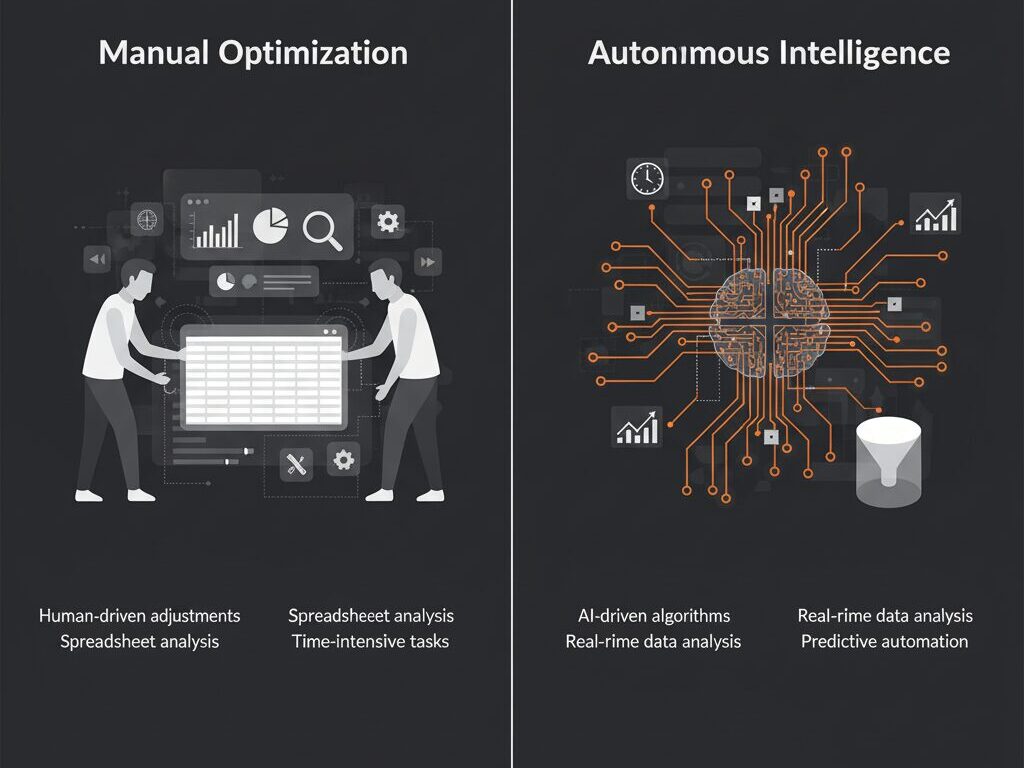
So, Marketing in 2026 will be faster and, other than that, it will be smarter, self-correcting, and strategically autonomous.
Key Prediction 2: The Rise of Autonomous Demand Platforms (ADPs)
From Automation to Autonomy: The Structural Leap
Traditional marketing automation tools (like HubSpot, Marketo, or Pardot) excel at executing rule-based logic: if a user downloads a whitepaper and then sends a follow-up email.
However, as buyer journeys fragment across channels and devices, linear logic struggles to keep up. That’s where autonomous systems step in.
An Autonomous Demand Platform follows rules, but other than that, it writes and rewrites them. It recognizes behavioral shifts, tests hypotheses, and adjusts campaigns dynamically without waiting for manual input. In short, it’s a demand engine that thinks and learns, and then executes.
The Three Core Engines of an Autonomous Demand Platform
At Intent Amplify, our analysis identifies three critical engines that define a true ADP architecture:
1. The Intelligence Layer (AI + Predictive Orchestration)
This layer combines predictive analytics, machine learning, and large language models (LLMs) trained on historical engagement data. It interprets buyer signals, such as content consumption patterns, CRM interactions, and account-level behaviors, to anticipate future actions.
By 2026, over 70% of enterprise marketers (source: Gartner 2025 AI in Marketing Outlook) are expected to deploy some form of predictive orchestration to manage channel mix and content delivery automatically. This marks a key milestone: decision-making shifts from human interpretation to AI-generated recommendations with confidence scoring and scenario simulation.
2. The Data Ecosystem (First-Party + Partnered Intent Sources)
In a world without third-party cookies, data silos are the enemy of growth. ADPs consolidate first-party intent signals, CRM data, and consent-based enrichment from verified partner ecosystems into a unified layer. At Intent Amplify, we view this as the foundation of next-gen lead generation: a privacy-first data engine that fuels smarter personalization without compromising compliance.
3. The Experience Layer (Dynamic Execution + Learning Feedback)
This is where orchestration meets experience. ADPs execute campaigns dynamically. This involves adjusting content, timing, and delivery channels in response to behavioral inputs. Every interaction feeds back into the intelligence layer, forming a self-optimizing loop. The result is a continuous improvement cycle that removes latency from marketing decision-making. Campaigns are always learning, from conversion rates to email engagement heatmaps to account-level behavioral trends.
According to some market surveys, 68.6% of organizations already integrate generative AI into their martech stack, but only a few (Approximately 18%) have achieved full orchestration maturity. That gap between automation and autonomy is where the next three years of innovation will unfold.
Key Prediction 3: First-Party Data Becomes the Fuel
Privacy-First, Precision-Ready
By 2026, the marketing ecosystem will complete its most significant shift in decades. From third-party dependency to privacy-first precision marketing. The end of cookies is not merely a compliance milestone; it’s a structural transformation in how data powers demand generation.
As of early 2025, 80% of Chrome traffic is already cookie-free. In addition to that, Global regulatory frameworks have made passive tracking an unsustainable strategy. The new growth currency is consent-driven first-party intent data, gathered transparently and used responsibly.
At Intent Amplify, we believe this change presents an opportunity, not a limitation. It compels marketers to rebuild data foundations rooted in trust, value exchange, and audience intelligence rather than opaque targeting models.
The New Core: Intelligent Data Infrastructure
The martech stacks of 2026 will revolve around three interconnected data pillars:
Consent-Backed Engagement Data
Every meaningful customer touchpoint, from gated eBooks to virtual events, will become a consent-driven data node. Marketers will no longer chase impressions; they’ll cultivate insight from permission-based engagement.
Behavioral Intelligence from Owned Channels
First-party behavioral signals, such as scroll depth, dwell time, or content sequence, will form the foundation of predictive lead scoring models. Modern platforms will integrate heatmaps, interaction trails, and content consumption paths into dynamic audience graphs.
Identity Resolution Frameworks
The next generation of martech stacks will adopt secure identity resolution, merging CRM, marketing automation, and ABM systems under a unified ID layer. Instead of tracking anonymous cookies, marketers will identify patterns through authenticated interactions.
This approach ensures a single, privacy-compliant customer view across channels, supporting predictive modeling and multi-touch attribution with accuracy.
At Intent Amplify, our analysis suggests that ethical data acquisition is now a competitive differentiator. Some Organizations communicate data value transparently, explaining why they collect information and how it benefits the buyer. These organizations will see higher opt-in rates and longer-term engagement.
Key Prediction 4: The Martech Stack Consolidates Around Ecosystems
From Fragmentation to Flow
Over the last decade, marketing technology has grown exponentially and chaotically. CMOs once celebrated the abundance of choice across more than 11,000 martech tools available globally. But by 2026, that abundance will reach a breaking point. The market is shifting from fragmented toolsets toward consolidated ecosystems that unify data, automation, and intelligence within a single operational layer.
At Intent Amplify, our analysis suggests this is a matter of convenience and a structural necessity. The modern demand engine requires speed, cohesion, and shared data intelligence. Every disconnected tool or API gap now represents not only inefficiency but also a lost opportunity to deliver consistent customer experiences.
Why Consolidation Is Unavoidable
Three converging forces are driving this consolidation wave across B2B marketing organizations:
Operational Complexity Has Peaked
As martech stacks expanded, so did maintenance costs, training demands, and integration challenges. In 2024, Gartner reported that 68% of CMOs found their martech investments underutilized due to fragmentation. In many enterprises, marketing teams juggle 30-50 tools just to manage campaigns, analytics, and lead scoring.
By 2026, these silos will give way to platform-native ecosystems that combine automation, analytics, and orchestration. This will reduce the “integration drag” that limits agility.
AI Requires Unified Data Context
Advanced AI models depend on complete, contextual data visibility. Isolated point solutions can’t provide this. Autonomous Demand Platforms and AI-led orchestration engines thrive when they can analyze every touchpoint in one environment. These include all of them, from ad impressions to CRM signals
As marketers adopt more AI-driven workflows, they’ll seek fewer but more capable platforms that offer native interoperability across marketing, sales, and customer success systems.
Economic and Compliance Pressures
The macroeconomic environment is tightening. CMOs are under pressure to prove ROI for every tool and ensure data governance under stricter global privacy regulations. This is leading to vendor rationalization. consolidating partners who can deliver multi-functional value under one compliant architecture.
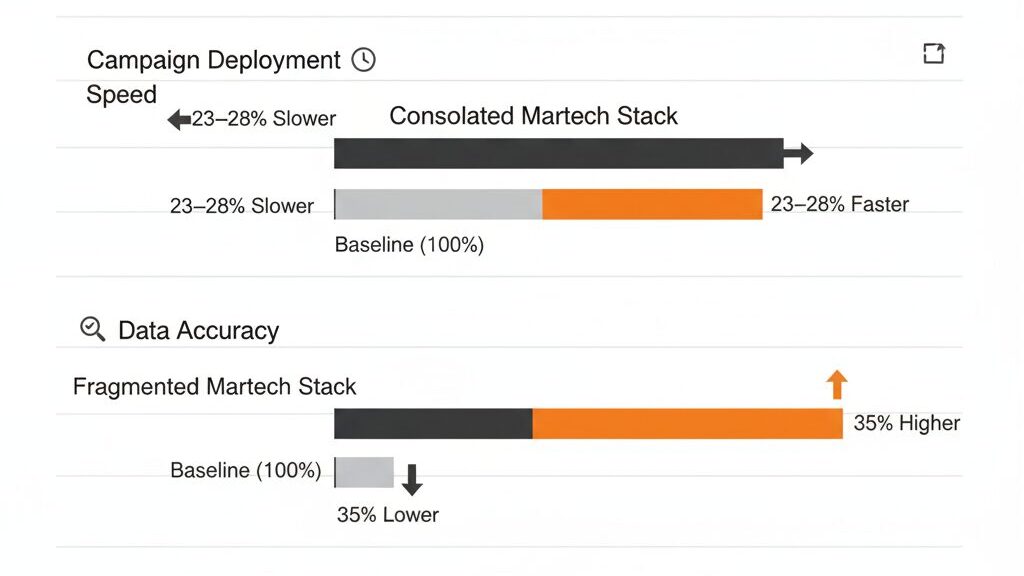
At Intent Amplify, our internal analysis shows that organizations consolidating their martech stacks into fewer connected platforms achieve 23–28% faster campaign deployment and 35% higher data accuracy compared to fragmented setups.
Key Prediction 5: Intent Data Becomes Predictive, Not Reactive
Intent data has been a cornerstone of modern B2B marketing. It is helping brands understand when prospects are in-market or actively researching. But by 2026, intent will move beyond mere observation. It will become predictive, shaping strategies before the buyer even signals explicit interest. At Intent Amplify, we believe that the future of demand generation lies in this transition, where intent isn’t just detected, it’s anticipated.
Until now, intent data operated like a rear-view mirror, capturing behaviors that already happened: content engagement, topic research, or ad interaction. The next generation of predictive intent models will leverage real-time behavioral streams enriched with AI-driven correlation analytics.
According to Forrester’s 2025 B2B Intent Benchmark Report, 64% of high-growth organizations are now investing in predictive modeling capabilities within their martech ecosystems. These systems analyze historical engagement data, CRM outcomes, and content consumption sequences to forecast buyer readiness up to 30 days earlier than traditional methods.
Predictive intent will enable marketers to identify accounts that are about to enter active buying cycles, not just those already in them. That shift will redefine how marketing, sales, and product teams prioritize resources.
Operationalizing Predictive Intent
Modern martech ecosystems are evolving to make intent actionable. Platforms like 6sense, Demandbase, and Intent Amplify’s DemandGen Intelligence Framework are embedding AI algorithms that score and rank accounts based on future conversion likelihood. By correlating topic clusters, digital footprints, and engagement velocity, these systems generate intent probability scores that help marketers trigger pre-emptive campaigns. These scores nurture prospects before competitors even detect activity.
A Gartner 2025 Marketing AI Survey revealed that companies using predictive intent analytics report 18–22% higher pipeline acceleration and 27% improvement in sales-qualified lead accuracy.
The future of Product Marketing in B2B and Demand Generation will hinge on how effectively marketers can forecast intent, personalize engagement, and deliver value before the buying signal even surfaces.
Key Prediction 6: Human Roles Shift Toward Strategy and Creativity
As automation and AI-driven platforms mature, one clarification occurs as marketing is no longer defined by manual execution, but by strategic interpretation and creative differentiation. By 2026, human roles in marketing will move decisively away from repetitive operations and toward high-value activities that require intuition, empathy, and judgment.
At Intent Amplify, we believe that the organizations poised to lead this next phase of transformation are those that treat automation not as a replacement, but as a force multiplier for human intelligence. The most competitive martech ecosystems will strike the right balance between machine precision and human imagination.
From Operators to Architects
For more than a decade, marketing teams have been built around operational efficiency. This includes campaign managers, data analysts, and automation specialists. But the next generation of marketing organizations will be built around strategy, insight, and creative orchestration.
A 2025 Deloitte CMO Insights Study found that 67% of marketing leaders are already restructuring teams to prioritize strategy and innovation over execution. Similarly, the LinkedIn Global Marketing Jobs Report (2025) revealed that roles labeled as “Marketing Operations” fell by 14%, while those focused on “Growth Strategy,” “Creative Intelligence,” and “Data Storytelling” grew by more than 20%.
This shift signals a new kind of marketer, one who is both analytically grounded and creatively agile.
The Human Edge in an Autonomous Stack
AI systems can optimize performance and predict patterns, but they lack context. They cannot intuit why a message resonates emotionally or why a market trend reflects deeper human behavior.
That’s where people come in.
The modern marketer’s value will increasingly lie in four domains:
- Strategic Foresight: Interpreting predictive signals to align marketing strategy with future market movements and buyer intent trends.
- Creative Intelligence: Translating insights into narratives, brand stories, and experiences that evoke trust and differentiation.
- Ethical Stewardship: Ensuring responsible AI governance, maintaining transparency, bias control, and compliance with global privacy standards.
- Cross-Functional Leadership: Orchestrating collaboration between marketing, sales, and product teams through a unified, intent-driven vision.
At Intent Amplify, our experience working with enterprise growth teams globally shows that when creative strategists and AI systems operate in tandem, conversion rates improve by 24–30%, while time-to-market for new campaigns drops by nearly 40%.
The Creative Strategist Emerges
In 2026, one of the most in-demand roles will be the Creative Strategist. A hybrid professional who understands martech logic but thinks like a storyteller.
This individual bridges analytics with emotion, using insights from predictive intent data, behavioral segmentation, and content scoring to build campaigns that are both data-informed and human-centered.
A Gartner Future of Work in Marketing 2025 Report noted that 61% of CMOs plan to redesign team structures to emphasize “adaptive creativity,” where human teams oversee AI-driven workflows and inject narrative context into automated campaigns.
The role of humans will shift from doing to directing and guiding intelligent systems to ensure every engagement remains authentic, ethical, and aligned with customer expectations.
Redefining Human Value
By 2026, the organizations that thrive won’t be those with the most sophisticated martech stacks, but those that empower their people to ask better questions, craft deeper stories, and build more human connections in a data-driven world.
Expert Takeaways: Building Toward 2026
The next 18 months will redefine how marketing ecosystems operate. The convergence of AI, data, and human creativity is the blueprint for scalable, intelligent growth and is no longer a trend only. Here’s what forward-thinking organizations should prioritize now to stay ahead:
- Audit your stack for redundancy. Eliminate tool sprawl and unify data flows to create a leaner, insight-driven martech engine.
- Invest in first-party data frameworks. Build durable pipelines of consent-based intelligence to stay resilient amid evolving privacy laws.
- Pilot AI orchestration tools. Focus on solutions that integrate natively with your CRM or ABM platforms, enabling real-time decisioning and smarter campaign automation.
- Upskill for AI fluency. Marketing teams must evolve from executional support to strategic enablers. They should be capable of interpreting AI insights, not just consuming them.
- Measure outcomes, not outputs. Redefine success around pipeline contribution, revenue impact, and customer lifetime value, and not just clicks or impressions.
Autonomous Demand Platforms won’t replace strategy; they’ll amplify it. The real competitive edge lies in how organizations align data, talent, and technology under one cohesive growth vision, where machines optimize, but humans inspire.
Conclusion: The Autonomous Future of Demand Generation
The martech landscape in 2026 will look dramatically different, not because of more tools, but because of smarter, connected systems that think and act on behalf of the marketer. At Intent Amplify, we believe the rise of Autonomous Demand Platforms represents more than a tech shift. It’s a mindset shift. From managing campaigns to managing intelligence, from collecting data to earning it, and from doing more to doing better.
The winners of 2026 will not be those with the biggest stacks, but those with the most intelligent, integrated, and autonomous systems driving their growth. And that’s where the future of demand generation begins.
Frequently Asked Questions (FAQs)
1. How soon should enterprises begin transitioning toward autonomous demand platforms?
Most B2B organizations are already integrating predictive or generative AI within marketing workflows. However, full ADP maturity takes 18–24 months, depending on tech readiness and data unification. Early adoption in 2025 allows teams to build scalable frameworks, integrate first-party data, and train models before competitors reach automation fatigue.
2. What’s the ROI timeline for autonomous marketing investments?
Based on Intent Amplify’s market analysis, enterprises implementing AI-driven orchestration typically see measurable pipeline acceleration within 6 to 9 months and 20-30% efficiency gains in campaign delivery by year one. The highest ROI comes when teams align ADP adoption with CRM, ABM, and content performance data. This ensures every insight drives revenue outcomes, not just engagement metrics.
3. How can marketing leaders maintain control and compliance as systems become autonomous?
Autonomy doesn’t mean loss of control; it means precision at scale. Governance must be built into orchestration logic through audit trails, consent-based data enrichment, and clear AI explainability models. CMO offices should establish ethical AI frameworks that define what can and cannot be automated, maintaining both brand integrity and compliance with global privacy standards.
4. What internal capabilities are most critical for successful ADP deployment?
Data Strategy Leadership, AI Literacy Across Teams, and Integrated Campaign Operations. These three skill sets are non-negotiable. Organizations that blend these capabilities see faster time-to-value and stronger adoption across business units.
5. How does this shift reshape agency partnerships and outsourcing models?
As ADPs automate execution, the value of agencies like Intent Amplify evolves. Clients no longer seek task execution; they need strategic data orchestration, AI governance, and demand acceleration consulting. In 2026, agency success will hinge on guiding enterprises through platform integration, predictive intent modeling, and human-AI collaboration frameworks.


